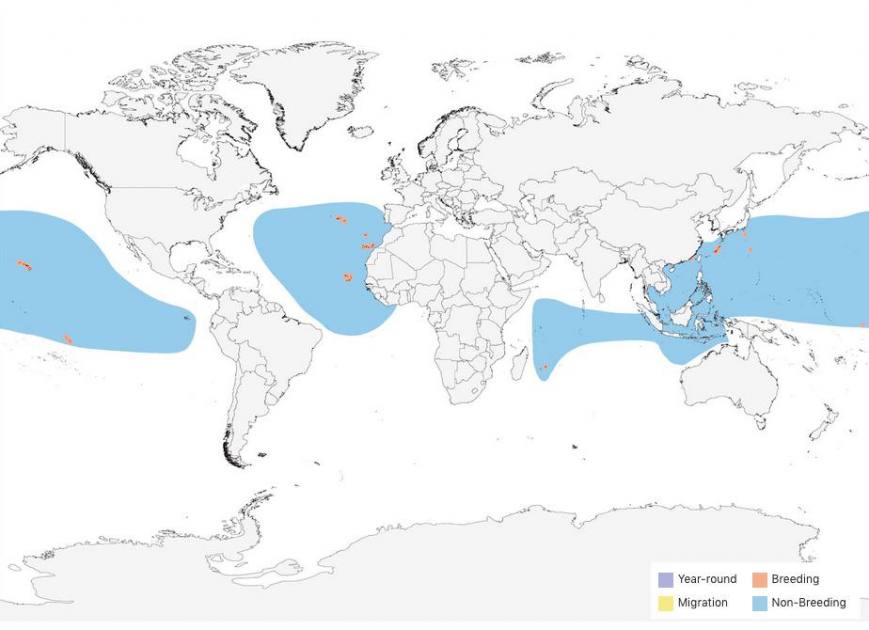
Bulwer’s Petrels are one of the birds for which there is no clear sexual dimorphism. This bird is named, in english, after the Scottish naturalist James Bulwer.
CHARACTERISTICS
- Latin name: Bulweria bulwerii
- Order: Procellariiformes
- Family: Procellariidae
- Length: 26-28 cm
- Weight: 87-100 gr
- Wingspan: 68-73 cm
- IUCN Status: Least concern
 Source: Map Lynx Edicions/BirdLife International
Source: Map Lynx Edicions/BirdLife International
DESCRIPTION
Important: Birds species have different identifying features depending on sex, age and season.
Eye color: Black
Beak: Thin black beak
Leg color: Black, dark brown
Feather colors: Black, brown

Bulwer’s Petrel in São Miguel, Azores. Photo courtesy of Glenn Welch
LIFE HISTORY
DIET
Bulwer’s Petrels mainly feed on fish, squid, and crustaceans. Most of their prey species are luminescent nocturnally and will migrate vertically to the water surface only at night, it is suggesting that Bulwer’s Petrels forage nocturnally by dipping or seizing preys at the surface.
REPRODUCTION
Bulwer’s Petrels nest in different habitats, but mainly on top of the cliff in small cracks or under rocks, in cave. The pairs probably last fourth years. The reproduction occurs between December and May. The incubation of a single egg (creamy-white and not shiny) lasts at around 44-47 days. The juveniles will reach the fledgling stage, first flight, at around 57-67 days.
VOCAL BEHAVIOR
Bulwer’s Petrels are usually silent in flight and on sea. They vocalize on the breeding areas making a sound of a vapor machine sounding like “hroo-hroo-hroo”. Listen yourself to this recording from James Bradley from Ilhas Desertas near Madeira: The “barking dog” sound is the call of Bulwer’s Petrels, while in the background you can hear Cory’s Shearewaters!
Illustration by Juan M. Varela.


















Your thoughts on this?